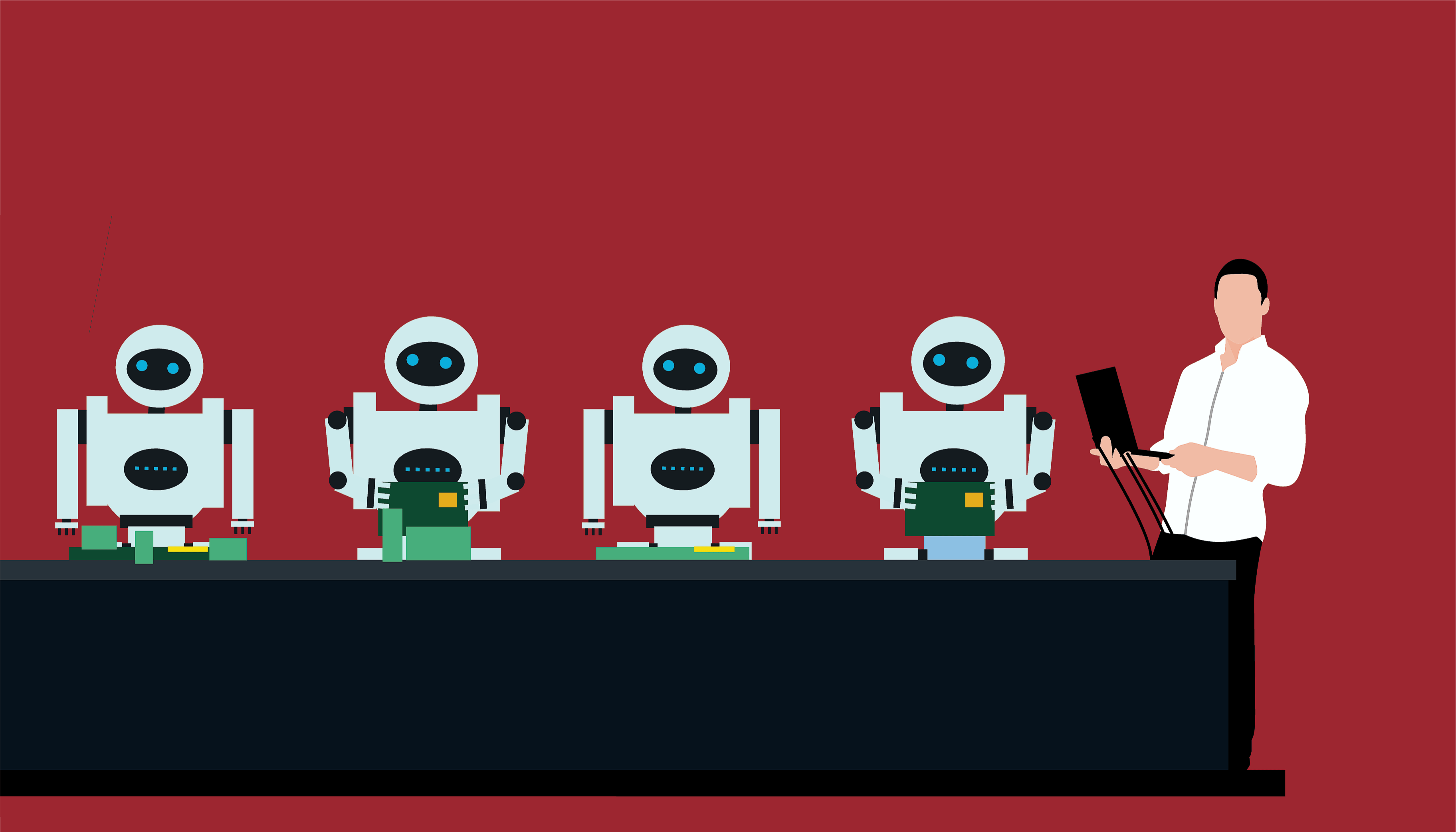A brief introduction to using AI automation for small and medium-sized businesses

Zoran M
Experienced digital strategist who excels at creating lead magnets, developing websites, and managing online stores. With a track record of driving e-commerce success, he brings a blend of creative and technical expertise to every project.
Today, small and medium-sized businesses (SMBs) are finding that AI automation is a great tool to help them work better and grow faster. AI automation combines smart artificial intelligence with regular automation, allowing businesses to do complex tasks quickly and accurately. This technology isn’t just for big companies; it’s affordable and useful for any size business.
For SMB owners, using AI automation can lead to big savings, better work efficiency, and the ability to handle more work without needing a lot more resources.
In this article, we’ll look at what AI automation is, how it can be used in different kinds of businesses, and give you steps on how SMBs can start using these tools effectively. If you want to make your operations smoother, improve customer service, or get new ideas moving, AI automation can help you make a big leap forward.
Understanding AI Automation
AI automation is a smart way to get computers to do tasks that usually need human brains, like understanding speech or making decisions. It’s like giving a machine a set of tools that helps it learn from what happens around it, so it can do its job better without needing a person to tell it what to do every time.
Imagine you have a robot that watches how you sort your emails. Over time, it learns which emails you read first and starts sorting them for you. That’s a bit like what AI automation does—it watches, learns, and then takes over tasks to save you time.
This technology is not just about replacing people’s jobs. Instead, it’s there to take care of the boring or repetitive tasks so that people can focus on more important things, like coming up with new ideas or solving problems. In businesses, AI automation can do things like:
- Answer questions from customers without needing a person.
- Check products for quality without making mistakes.
- Manage stocks in stores by predicting what will be sold soon.
- Generate financial (or any other)l reports
- Streamline employee scheduling
- Reply to emails, or enhance email marketing with personalization
By using AI automation, small businesses can work more efficiently and compete with bigger companies.
Benefits of AI Automation for SMBs
AI automation brings many good things to small and medium-sized businesses (SMBs). It makes work easier, faster, and cheaper in many ways.
- Cost Savings: AI automation helps cut down costs. For example, it can handle tasks like answering customer questions or managing inventory without the need for a lot of staff. This means businesses can save money on wages and use it for other important things.
- Better Accuracy: Machines don’t get tired or distracted, so they make fewer mistakes. Whether it’s entering data, checking for errors in numbers, or making sure orders are filled correctly, AI automation helps businesses do these tasks with high accuracy. This reduces the chances of costly mistakes.
- Ability to Handle More Work: As businesses grow, they need to do more work. AI automation can scale up quickly to handle increased demands without needing to hire more people right away. This makes it easier for businesses to grow without big jumps in costs.
Overall, AI automation is a powerful tool for SMBs. It helps them save money, reduce errors, and grow without getting overwhelmed by extra work.
Unlock the potential of AI for your business with “AI Automation for SMBs: A Brief Introduction to Using AI Automation for Small and Medium-Sized Businesses.” This essential guide provides you with the tools and knowledge to streamline your operations, enhance efficiency, and stay competitive in the fast-evolving market. Whether you’re looking to cut costs, improve customer service, or drive innovation, this book is your first step towards transforming your business through technology.
Don’t miss out on the opportunity to make your business smarter and more efficient. Order your copy today on Amazon at AI Automation for SMBs on Amazon. Begin your journey to a more efficient and innovative future now!
Practical Applications of AI Automation in Various Industries
Here are some ways AI automation is being used across various sectors:
- Retail: Small shops can use AI to manage their inventory smarter. AI systems can predict what products will sell quickly, so stores can order just the right amount. This helps prevent overstocking and saves money. AI can also help customers on websites by answering their questions instantly, which makes shopping easier and more enjoyable.
- Hospitality: Hotels and restaurants use AI to give guests a personalized experience. For example, an AI system can suggest activities and meals that guests might like based on what it learns about their preferences. This makes guests happier and more likely to come back.
- Manufacturing: Small factories use AI to make sure their machines are working well and to spot any problems before they cause big issues. This helps avoid delays and keeps production smooth. AI also helps in checking the quality of products as they are made, ensuring everything meets high standards.
- Healthcare: Small clinics and medical offices can use AI to manage patient records and appointments more efficiently. AI can also help by analyzing test results quickly, helping doctors diagnose diseases faster and more accurately. This improves patient care and saves valuable time.
- Finance: Small financial firms can use AI for tasks like analyzing loan applications faster, detecting fraudulent activities, and managing customer portfolios with greater precision. This helps them make better financial decisions and offer personalized advice to their clients.
- Agriculture: AI can help small farms monitor crop health using drones and sensors, predict weather impacts, and optimize water usage. This helps farmers make better decisions about planting and harvesting, leading to better crop yields and reduced waste.
- Legal Services: Small law firms can benefit from AI by using it to sort through large volumes of legal documents to find relevant information for cases faster. This saves time and allows lawyers to focus on building stronger cases for their clients.
By using AI, small businesses in these industries can work more efficiently and keep their customers happy.
How to Identify Opportunities for AI Automation in Your Business
For small and medium-sized businesses (SMBs) thinking about using AI automation, the first step is to figure out where it can help the most. Here’s how to spot the right opportunities for using AI:
- Look for Repetitive Tasks: Any job that is done over and over again is perfect for AI. This could be things like entering data, scheduling appointments, or updating records. AI can handle these tasks quickly and without getting tired.
- Tasks That Need Quick Answers: If a job needs fast responses, like answering customer questions or checking inventory, AI can be a huge help. AI can provide immediate answers, which is great for keeping customers happy.
- High Error Risk Tasks: Jobs where mistakes can happen easily, such as in accounting or order processing, are good candidates for AI. AI is very accurate and can reduce the chances of errors.
- Jobs That Use Lots of Data: AI is great at analyzing big amounts of information quickly. This can be useful in making business decisions based on market trends or customer preferences.
- Customer Service Enhancements: AI-powered chatbots can handle common customer inquiries on websites and social media platforms, providing instant responses outside of regular business hours. This not only improves customer satisfaction but also frees up human agents to handle more complex issues.
- Marketing Automation: AI can help SMBs tailor their marketing efforts by analyzing customer behavior and preferences. This enables businesses to send personalized emails, recommend products, and target ads more effectively, increasing engagement and sales.
- Human Resources Tasks: AI can streamline HR processes by automating job postings, sorting through resumes, and even conducting initial interviews through chatbots. This helps in quickly identifying the best candidates while reducing the workload on HR staff.
- Supply Chain Optimization: AI can predict supply needs based on trends and past data, helping SMBs optimize their inventory and reduce costs associated with overstocking or understocking. AI can also assist in managing logistics to ensure timely delivery of products.
- Security Monitoring: AI systems can monitor security cameras and alert business owners to suspicious activities in real-time. This enhances security measures without requiring constant human oversight.
These opportunities are just the beginning of what AI automation can offer to the innovative and growth-oriented SMB.
Unlock the potential of AI for your business with “AI Automation for SMBs: A Brief Introduction to Using AI Automation for Small and Medium-Sized Businesses.” This essential guide provides you with the tools and knowledge to streamline your operations, enhance efficiency, and stay competitive in the fast-evolving market. Whether you’re looking to cut costs, improve customer service, or drive innovation, this book is your first step towards transforming your business through technology.
Don’t miss out on the opportunity to make your business smarter and more efficient. Order your copy today on Amazon at AI Automation for SMBs on Amazon. Begin your journey to a more efficient and innovative future now!
Challenges and Misconceptions About AI Automation
While AI automation offers many benefits to small and medium-sized businesses (SMBs), there are also challenges and myths that need to be understood and managed.
Challenges:
- Integration with Existing Systems: Sometimes, fitting new AI tools into the systems already used by a business can be tricky. It might require upgrades or changes that can be costly and time-consuming.
- Training and Adaptation: Employees may need training to use AI tools effectively. It’s important for businesses to invest in training so everyone feels comfortable and can make the best use of the new technology.
- Data Privacy and Security: As businesses use AI to handle more data, they need to be very careful about protecting this information. Making sure data is safe from hackers is a big responsibility.
Misconceptions:
- AI Replaces Jobs: Many people worry that AI will take away jobs. However, AI is mostly used to handle repetitive tasks, allowing employees to focus on more important and interesting work.
- AI is Too Expensive: The cost of AI has been decreasing, making it more accessible for SMBs. There are also flexible pricing models that can fit small business budgets.
- AI is Too Complex to Use: Many AI tools are designed to be user-friendly, with interfaces that are easy to understand and manage.
By overcoming these challenges and clearing up misconceptions, SMBs can effectively use AI to improve their operations and compete better in their markets.
Planning and Implementing AI Automation
When small and medium-sized businesses (SMBs) decide to use AI automation, planning and implementing it the right way is key. Here’s how SMBs can start this process smoothly:
- Set Clear Goals: Before starting, it’s important to know what you want to achieve with AI automation. Whether it’s faster customer service, better inventory management, or more efficient billing processes, having clear goals helps guide the implementation.
- Choose the Right Tools: There are many AI tools out there, so picking the right one is crucial. Look for tools that fit your specific needs and budget. Often, there are demos or trial versions available that can help you decide if a tool is right for your business.
- Plan Step by Step: Break down the implementation into manageable steps. Start with one process you want to automate and expand from there. This helps prevent disruption in your business operations.
- Train Your Team: Make sure your employees understand how to use the new AI tools. Training sessions can help everyone feel more comfortable and get the most out of the technology.
- Monitor and Adjust: After you start using AI, keep an eye on how it’s working. Be ready to make changes if something isn’t going as planned. This could mean adjusting the AI settings or even switching tools if necessary.
With good planning and a thoughtful approach, SMBs can make AI automation a successful part of their business operations, helping them work smarter and grow faster.
Future Trends in AI Automation for SMBs
As technology keeps advancing, AI automation is set to become even more important for small and medium-sized businesses (SMBs). Here are some trends that will shape the future of AI in the business world:
- More Accessible AI Tools: AI technology will become more user-friendly and affordable, making it easier for SMBs to adopt. Companies will offer more AI solutions specifically designed for smaller businesses, helping them compete with larger companies.
- Increased Use of Voice and Image Recognition: AI will get better at understanding and responding to human speech and images. This will be used in customer service to handle inquiries and in stores to help customers find products they want by using voice commands or pictures.
- AI for Personalized Experiences: AI will help businesses offer more personalized experiences to their customers by learning what they like and dislike. This could mean personalized marketing, custom product recommendations, or tailored customer support.
- AI in Cybersecurity: As cyber threats increase, SMBs will use AI to enhance their security systems. AI can detect unusual activities and potential threats faster than traditional methods, providing better protection for business data.
- Autonomous Operations: AI will enable more businesses to use autonomous technologies in their operations. For example, delivery drones and self-driving vehicles can be used for local deliveries, reducing costs and improving efficiency for small logistics companies or retail businesses.
- Integration with IoT Devices: AI will increasingly work in conjunction with the Internet of Things (IoT) to manage and analyze data from connected devices. Small manufacturing plants, for instance, can use AI to optimize energy use and machine performance in real-time, based on data collected from IoT sensors.
- Advanced Analytics for Better Decision-Making: AI tools will become more sophisticated at processing big data, providing SMBs with advanced analytics to make informed business decisions. For example, restaurants can use AI to analyze customer preference trends and seasonal demand forecasts to adjust menu offerings and pricing.
- AI-powered Customer Relationship Management (CRM): CRMs will become smarter with AI, helping SMBs track customer behaviors and predict future needs more accurately. This can lead to better customer retention strategies and more targeted sales campaigns.
These trends show that AI is not just a temporary tech craze but a key part of future business growth and innovation. SMBs that embrace AI will find new ways to improve efficiency, engage with customers, and secure their operations.
* * *
AI automation is transforming the landscape for small and medium-sized businesses (SMBs) by offering tools that were once only accessible to large corporations. From retail to healthcare, AI is enhancing efficiency, reducing costs, and improving customer satisfaction across various industries.
By automating mundane tasks, AI allows employees to focus on more strategic activities, thereby boosting productivity and fostering innovation within SMBs.
As we’ve explored, the journey to integrating AI automation involves careful planning, choosing the right tools, and ongoing adaptation to maximize benefits. SMBs that embrace these technologies can look forward to not only keeping pace with industry trends but also setting new standards in operational excellence.
Adopting AI automation is not just about technological upgrades—it’s about preparing for a future where smart, efficient, and proactive business practices are the keys to success. For SMBs aiming to thrive in an ever-evolving marketplace, AI automation is not just an option; it’s an imperative.
Unlock the potential of AI for your business with “AI Automation for SMBs: A Brief Introduction to Using AI Automation for Small and Medium-Sized Businesses.” This essential guide provides you with the tools and knowledge to streamline your operations, enhance efficiency, and stay competitive in the fast-evolving market. Whether you’re looking to cut costs, improve customer service, or drive innovation, this book is your first step towards transforming your business through technology.
Don’t miss out on the opportunity to make your business smarter and more efficient. Order your copy today on Amazon at AI Automation for SMBs on Amazon. Begin your journey to a more efficient and innovative future now!

